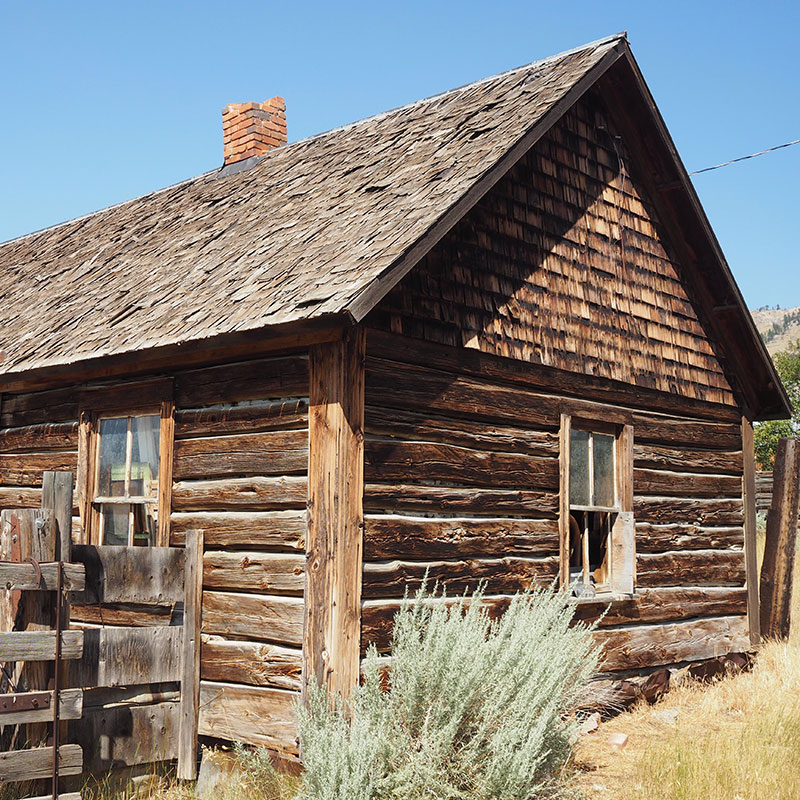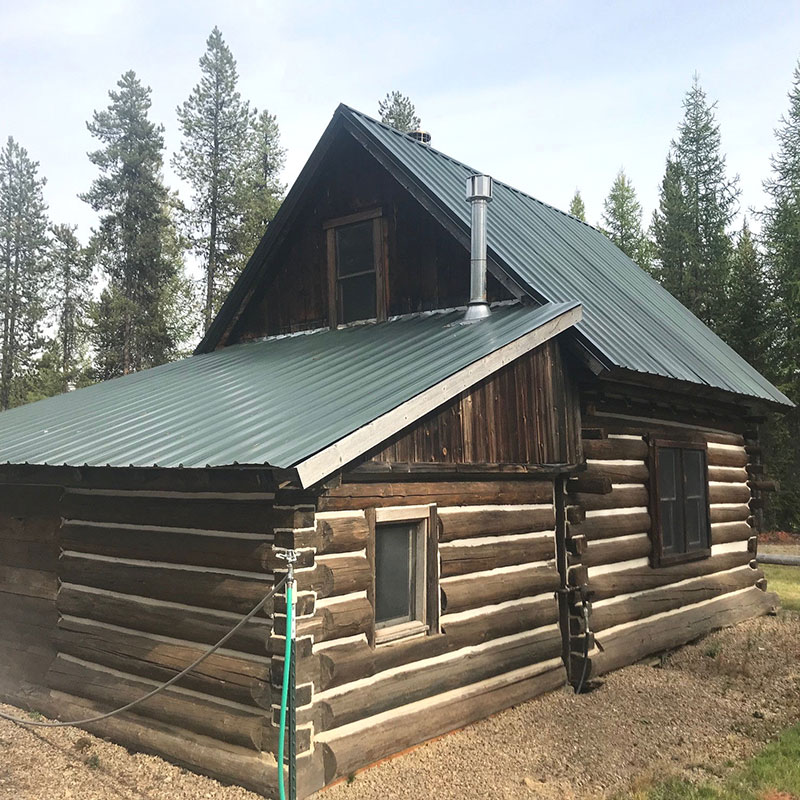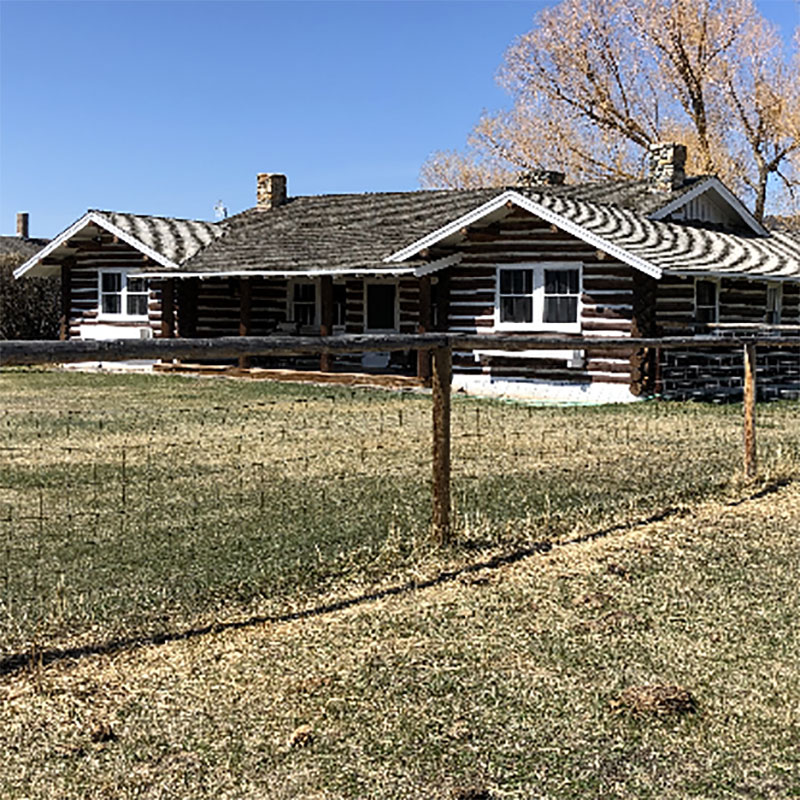National Register of Historic Places
The Montana State Historic Preservation Office nominates eligible properties to the National Register of Historic Places. The National Register of Historic Places is the nation's official list of those cultural resources deemed worthy of preservation. Authorized under the National Historic Preservation Act of 1966, the National Register includes districts, sites, buildings, structures, and objects that are significant in American history, architecture, archaeology, engineering, and culture. Although the National Register is a program of the National Park Service, it is administered at the state level by each respective state. In addition to the recognition that listing provides, registered properties are afforded a measure of protection from projects that are funded, licensed, or executed by the federal government. National Register properties may also be eligible for historic preservation tax incentives.
Using criteria established by the National Park Service, the State Historic Preservation Office and the State Historic Preservation Review Board evaluate data gathered from surveys, public inquiries, and other sources to determine the eligibility of specific Montana sites for nomination to the Register.
If the following answers to frequently asked questions leave you still wondering, we encourage you to call, email, or visit our office. Or, visit https://www.nps.gov/subjects/nationalregister/faqs.htm
The National Register is the official list of the Nation’s historic buildings and archaeological sites considered worthy of preservation. The Register was established in 1966 to help property owners, communities, and neighborhoods recognize their important historic properties, to offer realistic incentives for preservation, and to ensure that Federal actions do not harm these properties without alternatives being considered. The National Register was not designed as a major regulatory program nor as just an honor roll. The Register was intended to be broad rather than exclusive and includes many different kinds of properties important to the Nation, the State, a region or a local community.
Learn more: https://www.nps.gov/subjects/nationalregister/what-is-the-national-register.htm
National Register property owners may apply for Federal grants for buildings rehabilitation when Congress appropriates such funds. However, these funds are extremely limited and most property owners will not receive such funding. If you are a Community Cultural Organization, we encourage you to check with the Montana Arts Council (444-6430) to determine whether the project you are considering would qualify for Cultural and Aesthetic Grant monies appropriated biennially by the Montana Legislature.
Recognition
Most of all, Register listing provided your property recognition for its historic value and rewards you for your efforts in preserving it. Listing of a building, site or district also affords it prestige that can enhance its value and raise community awareness and pride. While National Register properties do not have to be preserved, listing does ensure that preservation is taken to be an important consideration whenever a building’s or site's future is in question.
Technical Assistance
Owners of Register properties are also able to seek advice from the Montana Historic Preservation Office on appropriate methods to maintain and rehabilitate older buildings or sites.
Signs
Owners of listed properties may apply for funds to obtain Montana’s official National Register interpretive plaque to mount on a stand or hang on an outside wall of their building. The applicant pays only a $35.00 shipping and handling fee or $55.00, depending upon the type of sign, the balance coming from the Montana Historical Society.
Government Agency Compliance Review
The National Historic Preservation Act and the Montana State Antiquities Act require federal and state agencies to consider the impacts of all projects occurring on public lands, or with federal funding, that affect historic properties eligible for or listed in the National Register. In addition, the Surface Mining and Control Act of 1977 requires consideration of historic values in the decision to issue surface coal mining permits.
The National Register carefully evaluates the quality of significance of each property being considered for listing. To be eligible for the Register designation, a property must meet one of more of the following criteria:
- Be associated with events that have made a significant contribution to the broad patterns of our history; or
- Be associated with the lives of persons significant in our past; or
- Embody the distinctive characteristics of a type, period or method of construction, or that represent thework of a master, or that possess high artistic values or that represent a significant and distinguishable entity whose components may lack individual distinction; or
- Have yielded, or may likely to yield, information important in prehistory or history. In addition, properties must possess a high degree of integrity to qualify for listing in the Register – in other words, they must be relatively unchanged in appearance from the historic period.
Generally speaking, a property must be at least 50 years old to be considered for the Register, unless it is of exceptional significance, or if it is an integral part of a historic district. Non-historic properties that are located within the boundaries of historic districts are also listed in the Register as “non-contributing” components of those historicdistricts.
If you still have questions, we encourage you to call, email, or visit our office.
Or, visit https://www.nps.gov/subjects/nationalregister/faqs.htm to find answers to questions like...
- What is the National Register of Historic Places?
- How is a property listed in the National Register of Historic Places?*
- What are the restrictions, rules, regulations for historic property owners?*
- Can I modify, remodel, or renovate my historic house? *
- How do I apply for grant money or tax credits? *
- Are there insurance regulation implications of a house being listed in the National Register?
- How do I get a plaque?*
- How do I get a copy of the file you have on a property?
- How can I update information for a property that is already listed? *
- I am pretty sure that a property is listed, but cannot find it in your database. Why is that?
- How old does a property have to be to qualify for listing?
- I want to know if a property is listed, how can I do that?
- I am a member of the National Trust for Historic Preservation. What can you do for me?
- I want to use the photographs in your files. Are they copyrighted?
- What are the definitions of some of the terms and acronyms you use?
- What is the preferred method for citation for the National Register of Historic Places nomination file?
- What is the difference between a National Park, a National Monument, a National Memorial, a National Historical Park, etc.?
Coming Up!
Winter Meeting: Historic Preservation Review Board
January 23, 2026
Agenda
Nominations Under Review are listed below.
Montana’s Historic Preservation Review Board meets three times each year to review nominations to the National Register.
Nominations under review
- Mountain Brook School - Flathead County
- Northern Pacific Engine 1356 - Addendum II to the Missoula Downtown Historic District, Missoula
- Big Hole Lookout - Lolo National Forest
- *Cambium Peeled Trees of the Bitterroot National Forest in Western Montana, 1650-1976 - Multiple Property Documentation (MPD)
- *Indian Trees Campground Cambium Peeled Tree Site
- *Hughes Creek/Alta Cambium Peeled Tree Site
*not available for open download due to the sensitive and confidential information. Please contact jboughton@mt.gov to request a copy.
Recently approved nomination forms are available by request:
- Carpenter Paper Company, Billings
- Goughnour Lumber Office Additional Documentation, Livingston
- Ashland Mercantile, Rosebud County
- Billings First Congregational Church, Yellowstone County
- Milk River Bridge, Phillips County
- Musselshell River Bridge at Ryegate, Golden Valley County
- Franklin School, Great Falls
- Albright Historic District, Cascade County
- Herbert Summer Cabin, West Boulder River
- Bridges of Pointdexter Slough, Dillon Vicinity
Current review board members and past meeting minutes are listed in the Resources tabs at the bottom of this page.
Properties are continuously added to the National Register. See the Resources tab at the bottom of this page for more information (e.g., Multiple Property Listings).
Owners or representatives of individually listed National Register properties, listed historic districts, or contributing properties within listed historic districts can apply for an interpretive sign.
- MTHS Story Maps
- Historic Montana Website
- Researching Your Historic Montana Property (SHPO Guide)
- Montana Cadastral
- Sandborn Fire Insurance Maps
- Montana Historical Society Research Center
Learn more in the Resources tabs at the bottom of this page.
- NRN-F (National Register Nomination Form) (nps.gov)
- How to complete National Register Forms (nps.gov)
- Portal for Submitting Complete Nomination (Coming Soon!)
Resources
Properties are continuously added to the National Register. See the Resources tab at the bottom of this page for more information (e.g., Multiple Property Listings).
Visit the National Park Service's National Archives page for tips and resources on researching properties on the National Register.
Explore this interactive map to find information about specific properties, view property attributes, and select layers and filters to refine your search by county, city, property type, and more.
MTHS Story Maps
Web mapping application that provides information about locations across Montana. Subjects include: The Driver Family Story, Statewide African American Heritage, Montana's African American Heritage, Helena's African American Heritage, Montana in the Green Book, Greenbook Listings in Montana, Montana and the Great War, Montana State Capitol Campus Historic District, Montana in the Nationa Register (Playing for Keeps).
Historic Montana Website
The Historic Montana website and companion app offers the historical text for Montana’s National Register of Historic Places interpretive signs and includes hundreds of "then and now" photographs and links to further reading.
Researching Your Historic Montana Property (SHPO Guide)
Montana SHPO's guide to help you compile the information necessary to nominate a property to the National Register of Historic Places. (PDF)
Montana Cadastral
Sandborn Fire Insurance Maps
The Sanborn Fire Insurance Maps are a valuable resource for genealogists, historians, urban planners, teachers or anyone with a personal connection to a community, street or building. The maps depict more than 12,000 American towns and cities. They show the size, shape and construction materials of dwellings, commercial buildings, factories and other structures. They indicate both the names and width of streets, and show property boundaries and how individual buildings were used. House and block numbers are identified. They also show the location of water mains, fire alarm boxes and fire hydrants. source: News from the Library of Congress, 2017, Sanborn Fire Insurance Maps Now Online
Montana Historical Society Research Center
The Library & Archives is a non-circulating library, archives, and photograph archives with collections available for onsite use as well as digitized materials available online. Search the catalog
- Airway Beacon System, 1934-1979 (Multiple Counties)
- African American Heritage Places in Helena (Lewis and Clark Co)
- Alberton MPD (Missoula Co)
- Anaconda MPD (Deer Lodge Co)
- Archaeology in Sheridan County MPD (Sheridan Co)
- Black Montana's Heritage Places (Multiple Counties)
- Bozeman MPD (Gallatin Co)
- Bridger MPD (Carbon Co)
- Bridges, Historic Steel Stringer and Steel Girder 1901-1961 (Multiple Counties)
- Bridges, Historic Steel Truss MPD (Multiple Counties)
- Bridges, Historic Timber Stringer MPD (Multiple Counties)
- Bridges, Reinforced Concrete MPD (Multiple Counties)
- Fire Lookouts, USFS Northern Region 1 1932-1967 MPD (Multiple Counties)
- Forsyth MPD (Rosebud Co)
- Fort Peck Townsite and Dam MPD (Valley Co)
- Fromberg MPD (Carbon Co)
- Glacier National Park Amendment MPL
- Glacier National Park Architecture MRA
- Glacier National Park MPD (Glacier Co)
- Glacier National Park MRA (Glacier Co)
- Glacier National Park, Settlement on North Fork Flathead River MPD (Flathead Co)
- Glendive MPD (Dawson Co)
- Hamilton MPD (Ravalli Co)
- Hamilton MRA (Ravalli Co)
- Hardin MPD (Big Horn Co)
- Joliet MPD (Carbon Co)
- Kalispell 1 MPD (Flathead Co)
- Kalispell 2 MPD (Flathead Co)
- Korpivarra MPD (Cascade Co)
- Lake McDonald Recreation Camps MPD (Flathead Co)
- Lewistown MPD (Fergus Co)
- Lewistown, Stone Buildings MPD (Fergus Co)
- Livingston Commercial District (Park Co)
- Lodge Grass MPD (Big Horn Co)
- Mission 66 MPD
- Missoula MPD (Missoula Co)
- Montana Modern: Post World War II Architectural Survey and Inventory
- Pony MPD (Madison Co)
- Post Offices in Montana 1900-1941 MPD (Multiple Counties)
- Roadside Architecture, US Highway 2 MPD (Multiple Counties)
- Schools, One Room in Gallatin County MPD (Gallatin Co)
- Schools, Suburban in Butte (Silverbow Co)
- Stevensville MPD (Ravalli Co)
- Thompson Falls MPD (Sanders Co)
- Upper Missouri River Corridor, Archeological Resources (Lewis and Clark Co)
- West Yellowstone MRA (Gallatin Co)
- Whoop-Up Trail (Multiple Counties)
- Willow Creek MPD (Gallatin Co)
Cultural Resource Consulting Services: History and Archaeology (PDF)
If you would like to be included in this listing, please complete and submit this form. Our office will confirm your information on an annual basis, but feel free to reach out to us at mtshpo@mt.gov at any time to notify us of any changes to your profile. Thank you for helping our office connect cultural resource professionals to projects in Montana.
Montana Historic Preservation Review Board
The Montana State Preservation Review Board consists of nine members appointed by the Governor. Their duties include the review and approval of National Register documentation, the review of appeals to National Register nominations, providing written opinions on the significance of properties, the review of completed State historic preservation plans, and providing general advice and professional recommendations to state agencies and the State Historic Preservation Office on the stewardship of heritage properties. Montana’s Preservation Review Board meets three times per year (typically in January, May, and September).
Past meeting agendas and minutes are available upon request.
To reach current Montana Preservation Review Board Members, email mtshpo@mt.gov to request contact information.
Current Board Members
(updated 1/2025)
- CHRIS AVERILL- Historic Preservation, Public - East Helena - 9/2022 to 10/2027
- LAURA EVILSIZER - History Professional - Helena - 12/2024 to 12/2028
- PHILLIPE GONZALEZ - History Professional - Helena - 12/2024 to10/2028
- Dr. DELIA HAGEN - History Professional - Missoula - 10/2020 to10/2028
- MARVIN KELLER - Historic Preservation Professional - Billings - 10/2018 to 10/2026
- ROSE KRIEG - Historic Preservation, Public - Butte - 12/2024 to 10/2027
- KELLYANNE TERRY - Public - Lewistown - 5/2020 to 10/2027
- MARY HORSTMAN WILLIAMS - History Professional - Hamilton - 12/2024 to 10/2026
For additional board, councils, and Commissions information, see: http://svc.mt.gov/gov/boards/



